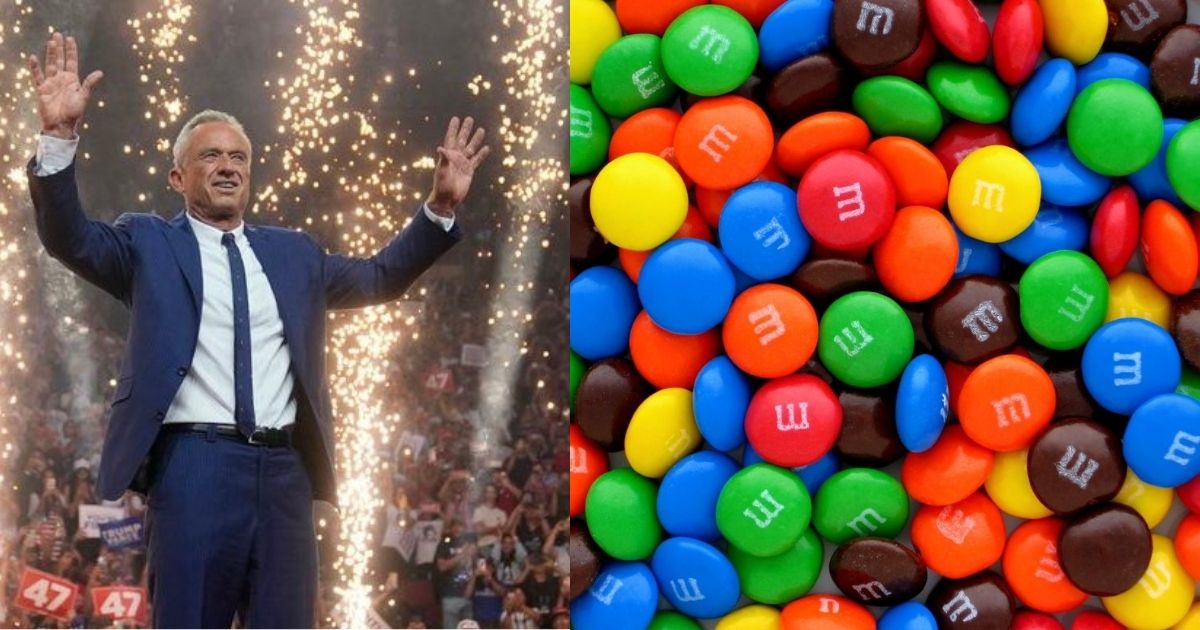While Donald Trump and his cabinet are set on removing restrictions from almost everywhere, RFK Jr. came out with a surprise.
In an unexpected move, he and FDA are out to make a few artificial food colors illegal.
The Food and Drug Administration (FDA) has announced its plans to phase out eight food colors. These colors are petroleum-based synthetic food dyes. This food regulation shows a bold move. There has been a widespread public outcry against these dyes.
Numerous studies have linked these dyes to many health issues, especially among children. Growing public pressure and health activism led to this historic ruling.
Robert F. Kennedy Jr has openly endorsed the shift. He called the FDA’s move a long-overdue win for consumer health. Kennedy and other activists have long argued for more openness and change in food safety and labeling.
🚨 #BREAKING – IT’S OFFICIAL: Trump administration moves to BAN essentially ALL artificial food dyes in the USA food supply at RFK Jr.’s direction.
Eliminate 6 dyes: Red 40, Yellow 5, Yellow 6, Blue 1, Blue 2, Green 3, by the end of 2026.
FDA Commissioner Makary says: “This… pic.twitter.com/Z2cq4xh4PW
— Eric Daugherty (@EricLDaugh) April 22, 2025
They have frequently cited the fact that many of these dyes were outlawed in European nations years ago.
Commonly used additives like Red 40, Yellow 5, and Blue 1 are among these eight dyes. These compounds can be found in everything from confectionery and breakfast cereals. They are also present in sports drinks and snack bars. These dyes are chemically produced from petroleum. The use of these dyes has always been debatable. However, they brighten food and improve its aesthetic appeal.
There is growing scientific evidence that ties these food coloring to behavioral problems in children. Some of these problems are hyperactivity and attention deficiencies. Numerous studies by the FDA have proven these claims. That’s why the FDA has finally decided to work to get these dyes out of our food supplies.
Red 40, Yellow 5, Blue 1…these food dyes are in A LOT of what we eat.
The NIH links them to cancer, DNA damage, ADHD, depression, and much more.
But it also says it CAN’T DETERMINE if we’re eating dangerous amounts of them?! That sounds like important information to have! pic.twitter.com/lwb2wLjy8E
— Glenn Beck (@glennbeck) October 17, 2024
Some studies link these colors to DNA damage in lab settings. There have also been allergic reactions and possible carcinogenic effects of these colors on humans.
The FDA had previously insisted that these dyes were safe in controlled quantities. However, the most recent studies and public outcry forced the agency to take action.
There have long been health concerns about certain food colors. Yet, the FDA’s ruling is the first significant regulatory recognition of its dangers. The possible impacts of these colors on children’s neurological development are among the most hotly contested. Research also shows that children who are sensitive to specific chemicals may become more hyperactive after eating food containing these pigments.
Other dangers that are being emphasized are:
Red 3: Associated with thyroid cancers in animal experiments.
Yellows 5 and 6: Linked to allergic reactions and potential exposure to benzidine and other toxins.
Blue 1: Possible issues with buildup in organs and cytotoxicity.
This long-awaited decision is being praised by the general public, health professionals, and customer advocacy groups. One pediatrician even said that parents shouldn’t have to read every label to avoid chemicals that are banned in other parts of the world.
Today was incredibly surreal. I’ve spent my entire career fighting for clean, safe food—free from toxic chemicals like the food dyes that were finally banned today.
I’m deeply grateful to my friend, Commissioner @DrMakaryFDA, for his bold leadership and commitment to reshaping… pic.twitter.com/kkwIn0A6Da
— Mark Hyman, M.D. (@drmarkhyman) April 23, 2025
FDA has made a phase-out plan. It includes a schedule that permits producers to restructure products without these colors. It will give food manufacturers enough time to get the color out of all the food items produced. Some of these food items are Pop-Tarts, hot dog casings, Takis and Mountain Dew.
Some food firms may find this difficult. However, many have previously created dye-free substitutes for markets outside of the US, where these ingredients are illegal. Therefore, it should not be a big problem.
This legislative reform is a sign of a larger movement toward cleaner and more transparent labeling. It also represents a turning point in food regulation.













